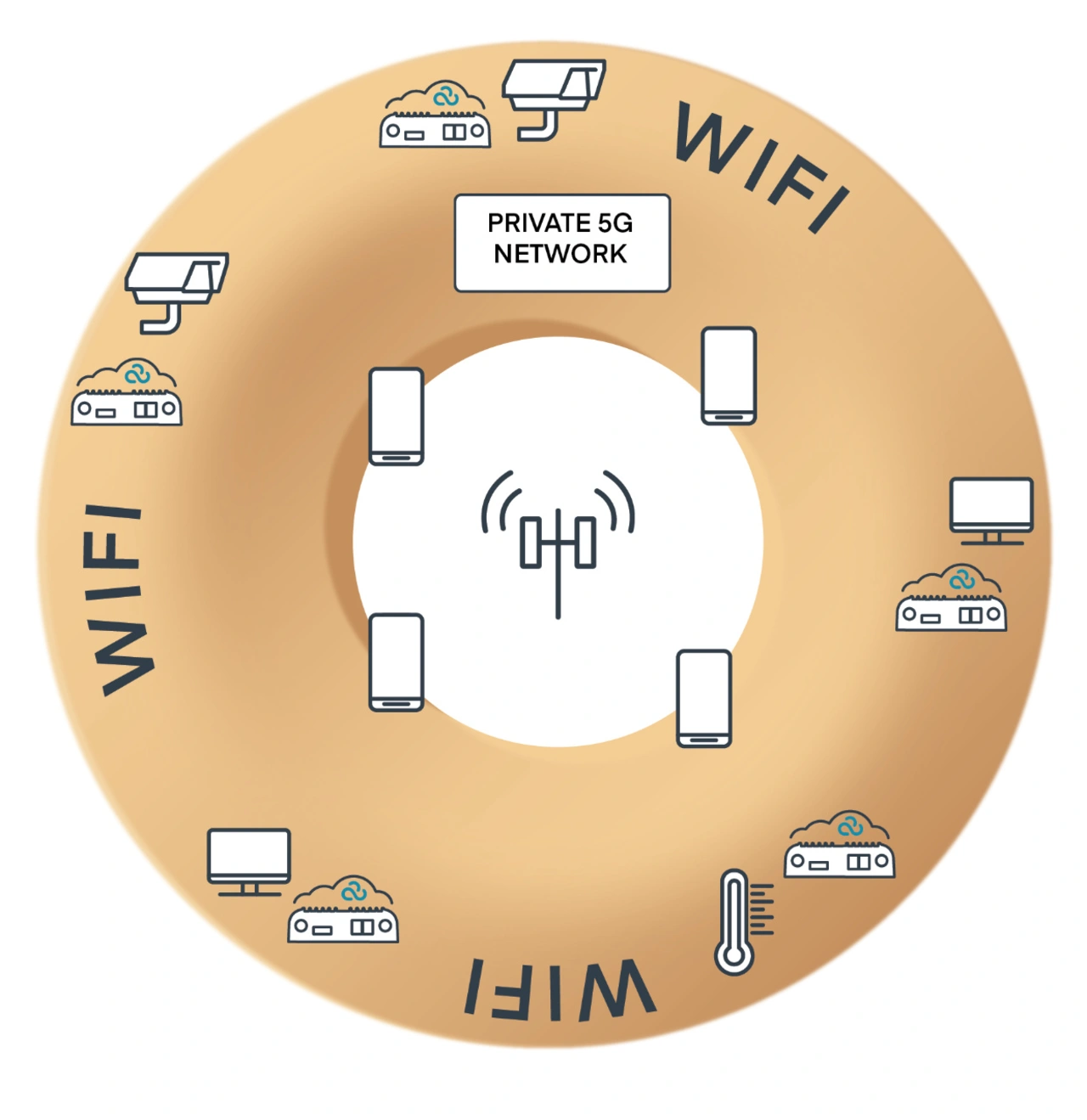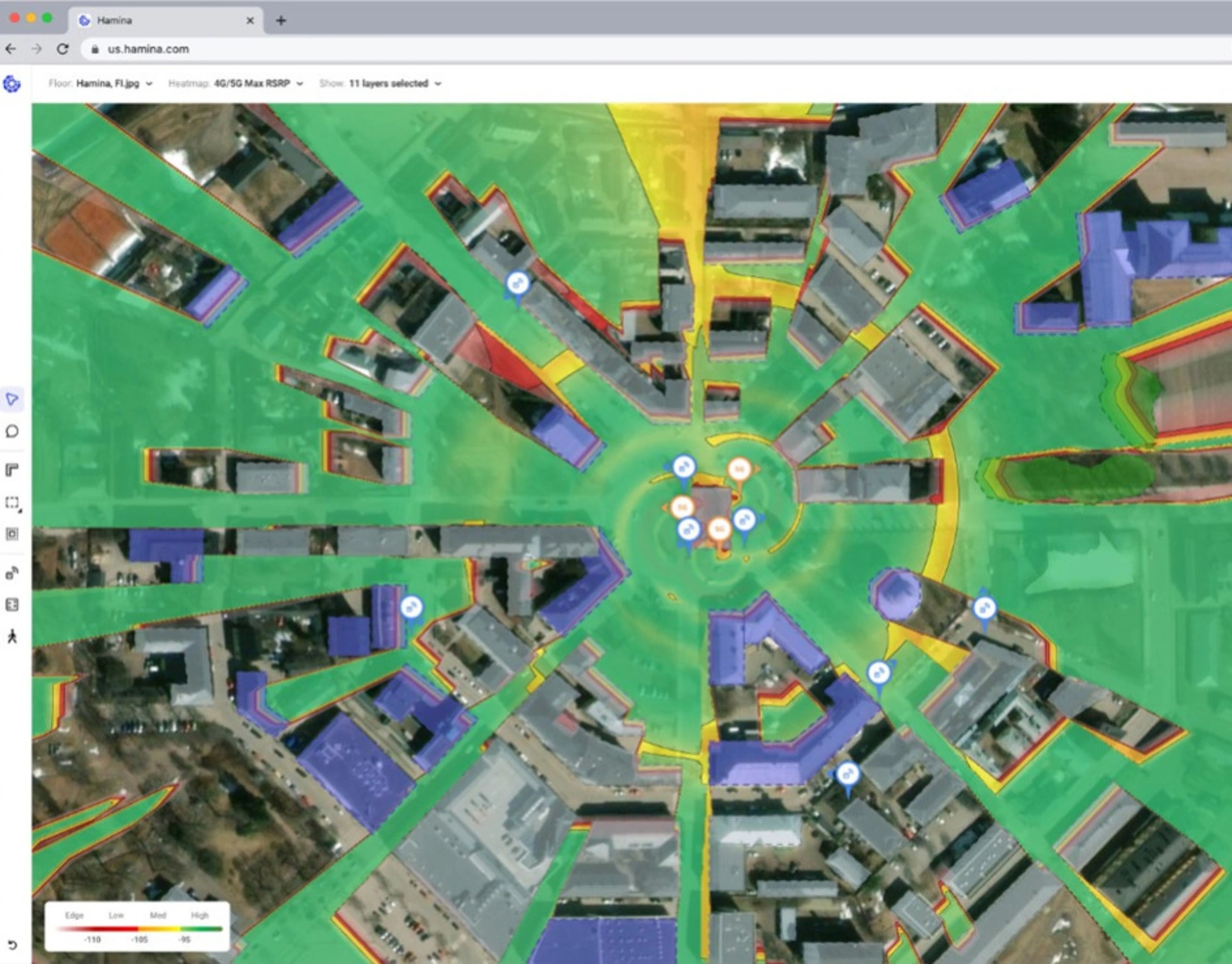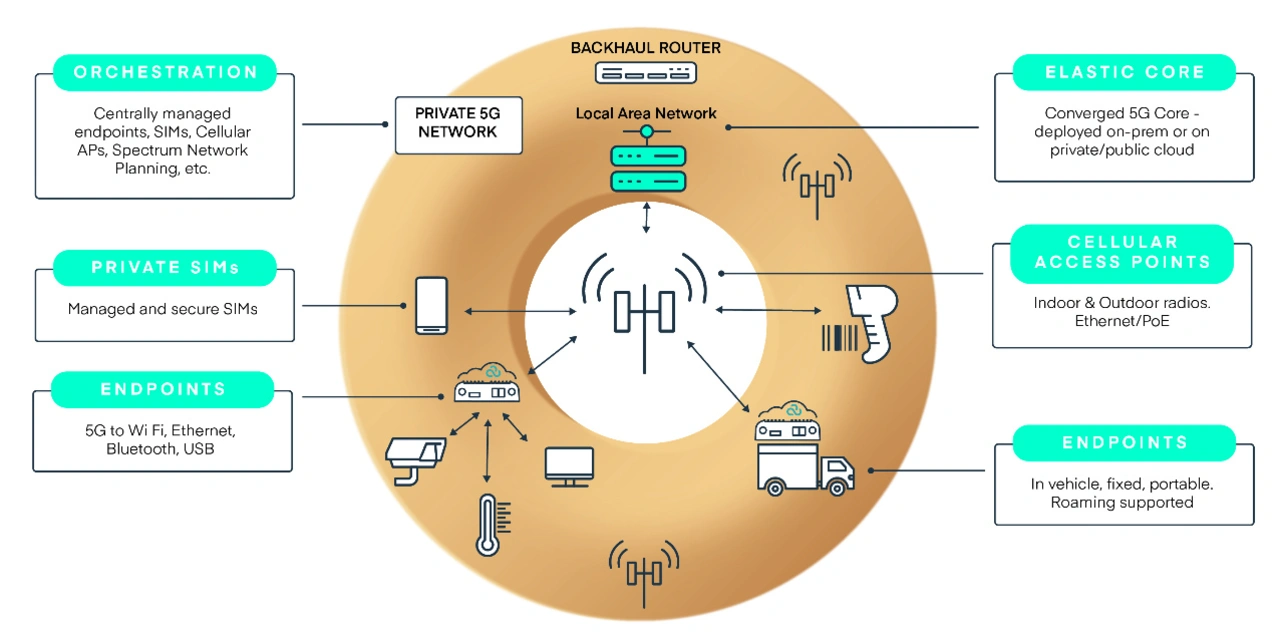Wi-Fi and/or 5G in campus networks?
Everything should do what it can do best
Wi-Fi and 5G can thrive together in private wireless networks, and wireline networks like Ethernet can play a complementary role. So the future of industrial networking does not belong to one standard alone but to a meaningful combination of technologies that are suitable depending on applications.
The goal of connecting everyone to everything and doing it fast, with low latency, massive data throughput and great security was - and still is - the goal of Wi-Fi. However, many of us know that Wi-Fi has its good and not so good aspects. Private 5G networks are now becoming a reality, promising robust, high-performance, secure networks with great coverage. But how exactly is this supposed to work? How do Wi-Fi and 5G work together in these networks in a meaningful way? How can companies and organisations build their own 5G campus networks? Where are the obstacles? How ready is the market?
The Donut Analogy

Imagine a slightly nibbled donut and you'll have a good picture of how Wi-Fi and 5G go hand in hand in campus networks. An uneven circle with a hole, that's the future.
The first concentric circle, the hole in the middle, symbolises the wide- or campus-area coverage provided by 5G networks. One or more transmission towers provide the desired area with a secure, robust and fast network with, potentially, up to one million devices in one square kilometre. The 5G campus network is powerful and adaptable to meet the various latency and throughput requirements for different scenarios - from IoT sensors for predictive maintenance to autonomous vehicles and computer-aided maintenance. Private 5G networks follow the same security model as public networks but operating in specific, separate frequency bands. The entire network is private with its own network architecture, security and access. Access to a private 5G network is granted or denied to a SIM-enabled endpoint by the 5G cellular core. Each private network SIM card also provides a distinct device identity, allowing you to carefully manage the resources that identity can access.
Best development opportunities in Germany
5G network spectrum is licensed in Germany via the Federal Network Agency. Licences are available to all companies, public authorities and universities that can convincingly demonstrate why they want to operate a private 5G network. With the help of a transparent cost model, the licensing process is very straightforward by international standards and is one of the reasons why Germany is considered a pioneer country for 5G campus networks.
Network planning is precision work with many metrics

Network design and construction are not without their challenges; the devil is in the details. Unlike Wi-Fi, 5G solves interference problems, covers relatively large distances, offers more security and prioritises latency and bandwidth as desired. 5G campus networks need radio coverage planning in a similar way to a large-scale Wi Fi network. Each indoor and outdoor area must be carefully measured. Wi-Fi engineers will be able to cross train to do this, but in the short term the skills required may be in short supply as radio access network planning has so far been the job of carriers and large network equipment suppliers like Ericsson.
A high-rise building built with reinforced concrete walls must be approached differently than a large warehouse when it comes to demanding network planning. Terrain, vegetation, and buildings can all determine how far the signal reaches and how the quality of the connection is. Planning will show where the radios need to be located and where there could be “Not Spots”, locations with low signal strength.
5G or Wi-Fi? Both!

This brings us back to our donut: the hole in the middle stands for large-scale coverage with 5G. The dough already bitten into symbolises the Not Spots, where complementary networks solutions such as Wi-Fi will take over. Because Wi-Fi is expensive and complex to cover a large campus environment, private 5G fixes the coverage issue.
An example: let's imagine the sprawling premises of a medium-sized manufacturing company. The delivery of goods from the warehouse to the production hall is handled by automated guided vehicles (AGVs). The data and processing for this is running via the low latency 5G campus network. The warehouse has ubiquitous public 5G coverage inside and out. The production hall has 5G where the vehicles unload but further into the building the public 5G signal diminishes. At this point there are a couple of options. The first is to extend the private 5G with an indoor transmitter or convert to Wi Fi. The company has already invested in a significant number of Wi-Fi IoT sensors, so it makes sense to use Wi-Fi inside the production hall. Installing a 5G router in the production hall will translate the campus 5G network into Ethernet and Wi-Fi. In this way, the network coverage resembles a slightly nibbled donut where small networks provide complimentary connectivity at the edge of 5G coverage.
Many devices, such as phones, tablets and laptops, now include 5G connectivity and can all accept public or private network SIMs, but there are a huge number of network-attached devices that cannot. These devices still need Ethernet or Wi-Fi to connect to. This is where joining the LAN (wired and wireless) to the campus 5G network eliminates the requirement to run fibres throughout the campus or using point to point microwave links between buildings. Private 5G can also be deployed to vehicles and other moving objects, which fibre and microwave struggle to support.
Getting the donut rolling
But how do you get the donut rolling? There is still some uncertainty. Do we need this? What do the combination of 5G, LAN and Wi-Fi really mean, and is it right for my environment? The market is in its early stages and education and understanding of how and where it will work and - importantly - where it doesn’t make sense to deploy.
5G is seen as a public network, built by large vendors and run by mobile service providers. The solutions have been tailored to carriers. Private 5G will be delivered by both the mobile service providers and enterprise providers whose products and systems fit into IT-driven companies. Both types of solution providers will need to cross-train engineering staff to be able to plan and implement private 5G networks. Mobile service providers need to look at how to downsize their 5G implementations and enterprise providers need to re-skill their Wi-Fi and security staff to work on private 5G solutions.
Last but not least: What about the costs? Costs vary significantly between the different use cases, depending on number of users and the size of the area covered. Many current private 5G installations have either been small scale, typically from start-up companies, or from the traditional 5G vendors providing their larger scale implementations.
Established networking and cloud vendors are now entering the Private 5G market. This will standardise the hardware components, further virtualise the software components, simplify management and move more functions to the Cloud. This will drive competition in the market and private 5G solution costs will be driven down.
As with all emerging technologies there will be challenges and some tasty benefits for early adopters, but it is clear: the future of connectivity is a circle with a hole. Currently, we are frying that circle.
The author: Roger Jones works as Solutions Architect EMEA at Cradlepoint.
This article appeared as part of the Wireless Congress 2022, where Roger Jones gave a talk on the topic.








